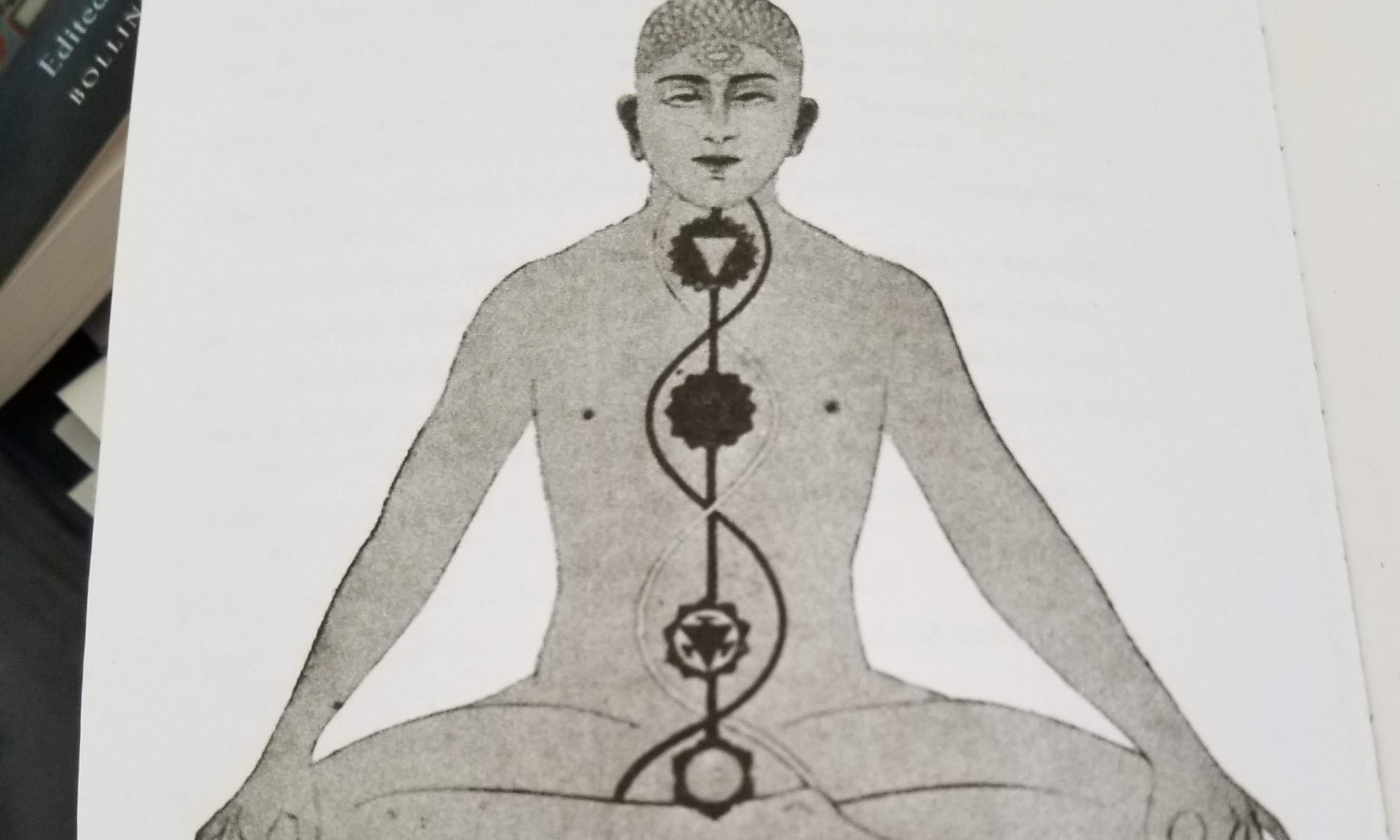“He who meditates upon this stainless Lotus, which is named Svadhisthana, is freed immediately from all his enemies…and is like the sun illuminating the dense darkness of ignorance.”
Description of the Six Centres, Verse 18
Svadhisthana – the sacral chakra
The next chakra is svadhisthana, the sacral chakra. This is the chakra of emotions and creativity. Within the body, svadhisthana is located in the region of the sacrum, where the spine connects to the pelvis.
When svadhisthana is not activated, we exist in a psychic state where we just want to live in a carefree and hedonistic way. Wilhelm Hauer (a Tantric scholar and contemporary of Jung) described it as, “the life we live freely and thoughtlessly, just throwing ourselves into the stream of life and letting ourselves be carried, floating on to all that comes to us.”

In modern descriptions, svadhisthana is assigned the color orange, but in the traditional texts, the six petals of the mandala are described as being of a vermillion (bright red) color. It is associated with the element of water, symbolized by the silver crescent moon within the mandala.
The animal contained within the mandala is a makara (crocodile or sea monster). This is the only chakra whose mandala contains a scary animal. To Jung the svadhisthana chakra contains the idea of a symbolic death complete with confronting the danger of being drowned or devoured by the makara. He relates this not only to the act of baptism but also to the sun myth found in ancient cultures such as the Egyptians and the Greeks. I found his equating the whole baptismal story to the sun myth very enlightening. Here is how he explains it,
“…the sun in the afternoon is getting old and weak, and therefore he is drowned; he goes down into the western sea, travels underneath the waters (the night sea journey) and comes up in the morning reborn in the East. So, one would call the second chakra, the chakra of baptism, or of rebirth, or of destruction – whatever the consensus of the baptism may be.”
– Carl Jung, The Psychology of Kundalini Yoga
Jung’s interpretation is even more interesting if considered with regard to creativity. Think about the fear that can accompany your desire to express yourself creatively. For example, I have a lot of fear concerning writing these posts about chakras. I have fear every time I get ready to start a new creative project. Is this going to be too hard? Am I going to be able to make something good enough? Do I have what I need (either the experience or the materials) to complete this? The fear keeps me from starting. But at some point, I have to take a deep breath and dive in. Face the monster and come out the other side with the satisfaction of knowing that the idea inside of me has been released into the world.
Think about it like going for a swim in the ocean. You can stand near the shore and keep getting pounded by the break or you can take a deep breath and dive in, and when you come out on the back side of the waves, you realize how much easier it was to act than to let your fear keep you stuck where you were.
Next week we will talk about manipura – where you arrive when you are reborn after your symbolic death.


I love Kundalini yoga!